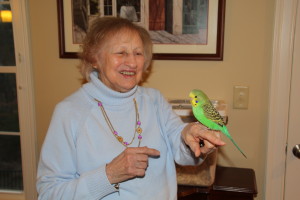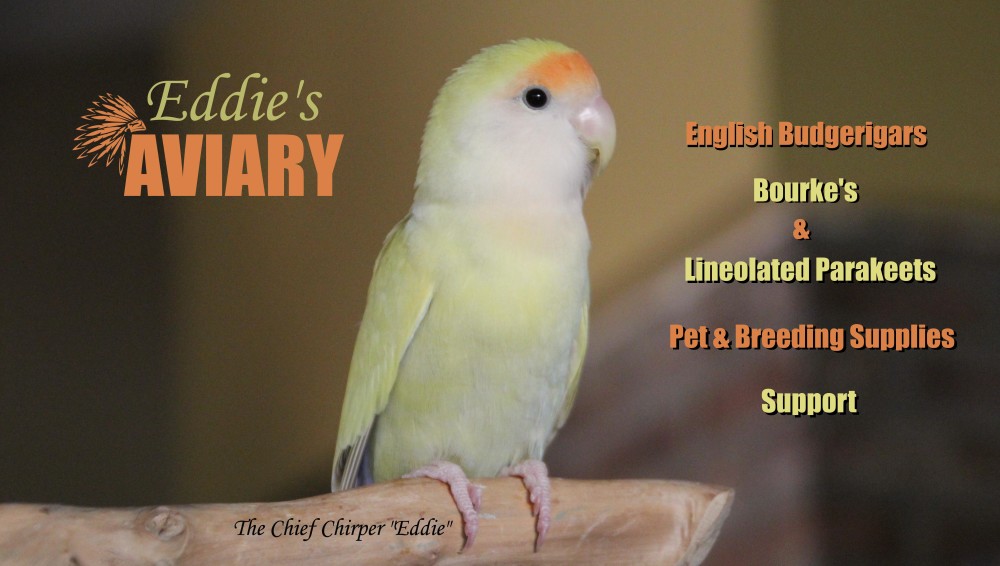One of the things that drew us to English Budgies were all of the beautiful mutations (colors). Learning genetics is very fun, and encourage anyone interested in breeding these colorful little clowns to learn about genetics before setting up a pair. On this page we are going to give a short crash course on some of the most frequently seen mutations so you can understand their inheritance in a simple way. We will provide pictures with the proper mutation names, so if you request a bird, you will know how to communicate that to us.
GREEN SERIES – DOMINANT

Great grandmother Mimi at 96 years old on Thanksgiving, saying hello to a baby normal green English Budgie male named RJ.
© COPYRIGHT 2016 Eddie’s Aviary
Pictured above is a Normal Green. Green comes in this “wild type” green which has no dark factors, as well as dark green and olive which have 1 and 2 dark factors respectively. Because green is dominant, if a bird without a split to blue (a recessive gene) is paired to a blue series bird, 100% of the offspring would be green. Since it is hard to find a no split green in America today, this happens less often than you would think. We are working on a line of split free greens.
BLUE SERIES – RECESSIVE
A recessive gene is one that produces phenotypically (a visual specimen) when the alleles from each parent match. Both parents must carry the gene for blue to get a blue baby. For example, two blue parents will ONLY produce blue young. A green bird split to blue, and a blue will produce Green and Blue young, and two green parents split blue will produce green and blue babies, with a higher percentage of offspring being green. A green series bird with no blue split x a blue bird will yield 100% green young.
